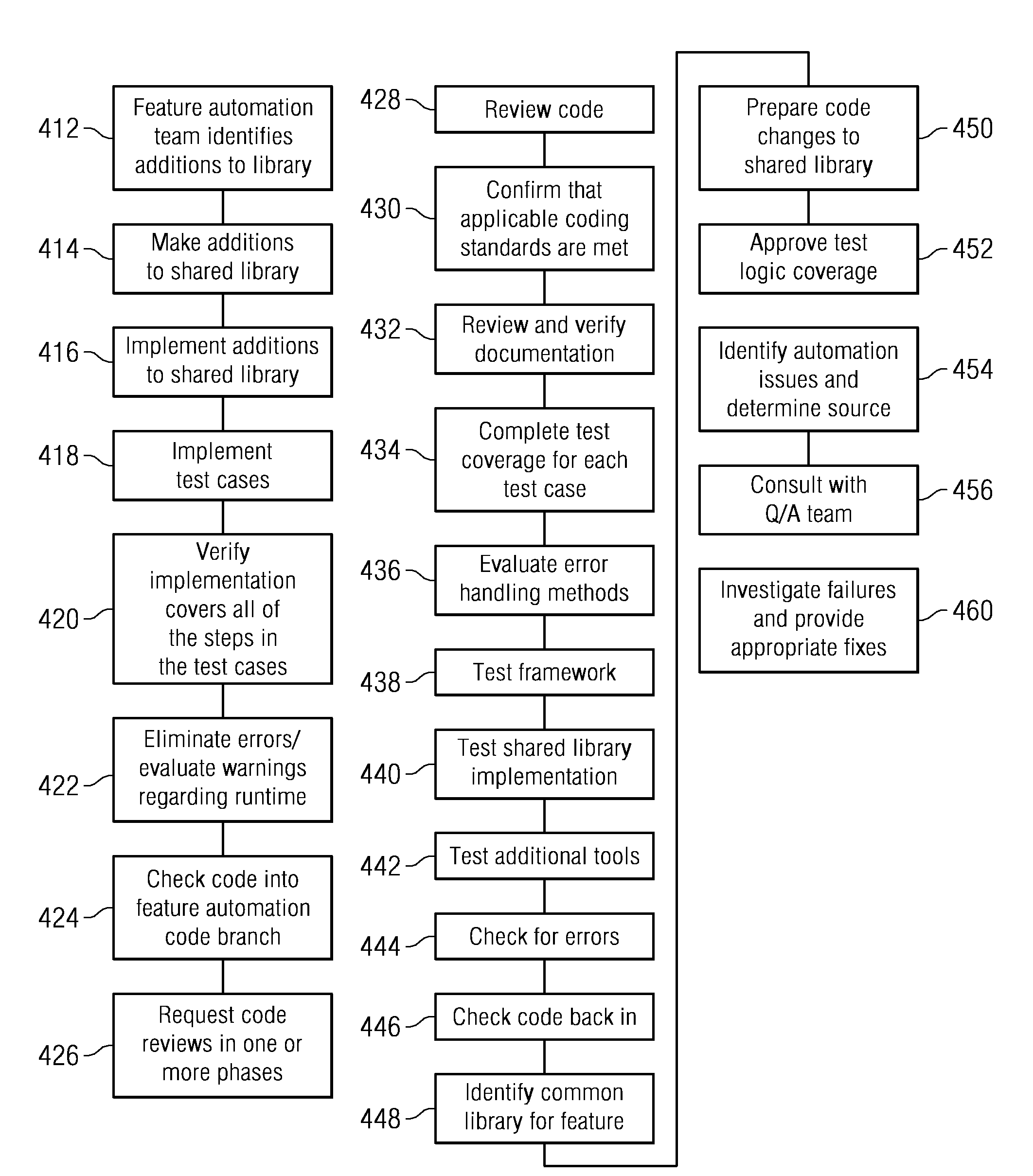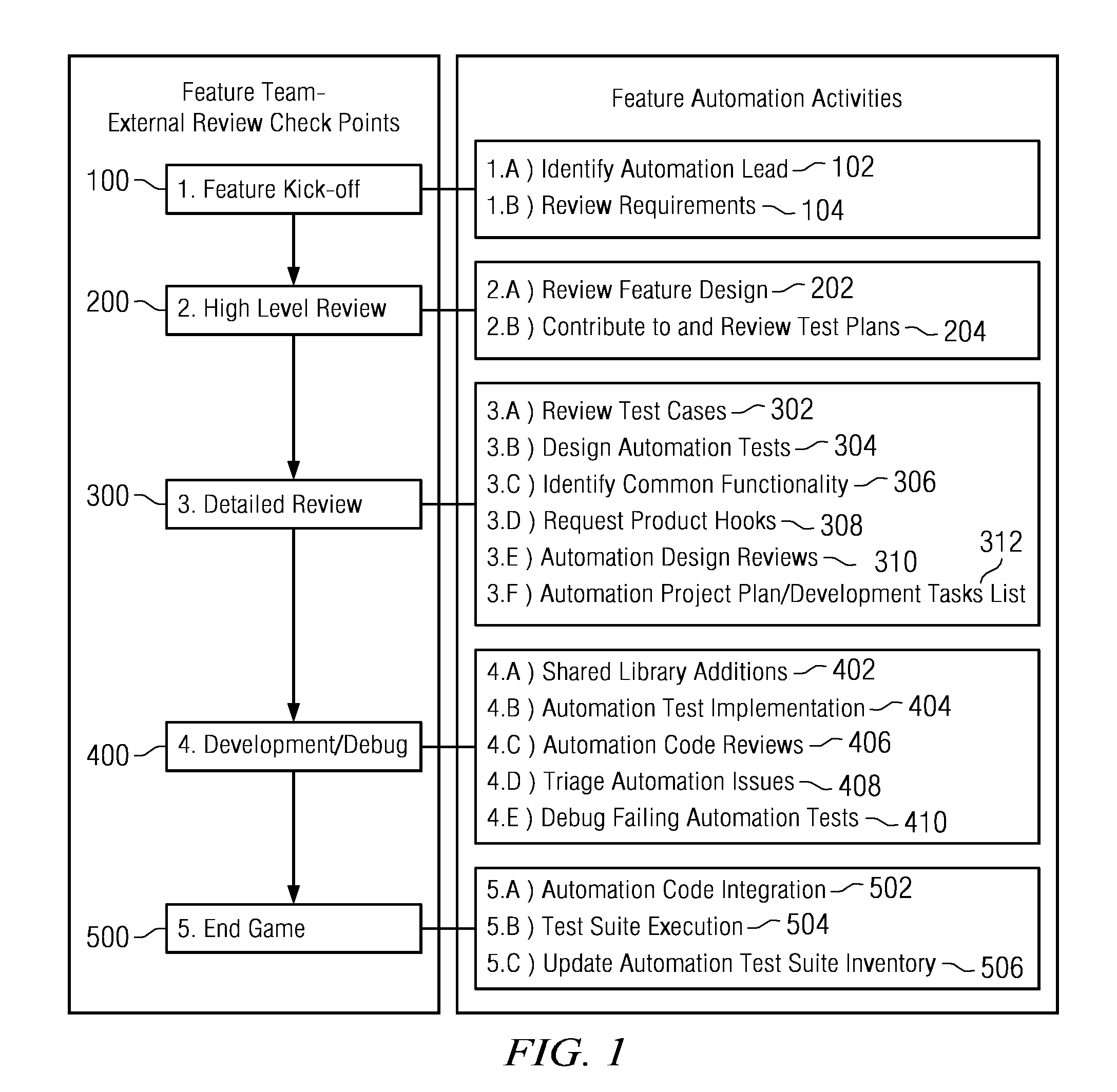Method and system for feature automation
a technology of feature automation and method, applied in the field of method and system for feature automation, can solve the problems of insufficient concrete procedure established in the software engineering industry to provide test automation that produces reliable, repeatable results
- Summary
- Abstract
- Description
- Claims
- Application Information
AI Technical Summary
Benefits of technology
Problems solved by technology
Method used
Image
Examples
Embodiment Construction
[0020]The reader should be familiar with basic terminology of software engineering. The feature automation process of this disclosure preferably includes a number of high level steps or phases that are illustrated in FIG. 1. Each of the component aspects of each phase will be described and / or defined in more detail below and as shown in FIGS. 3-7. The first step (phase) is feature kick-off, which is indicated by reference numeral 100. Thereafter, a high level review takes place, which is step 200. After the high level review, the next phase in the process is the detailed review phase 300. After the detailed level review phase, the next phase in the feature automation process is the development / debugging phase 400. Thereafter, the end game phase 500 completes the process.
[0021]Turning now to the more detailed aspects, and also with reference to FIG. 3, the feature kick-off phase 100 typically has a set of sub-steps, the first being identifying the feature automation leader 102. This ...
PUM
 Login to View More
Login to View More Abstract
Description
Claims
Application Information
 Login to View More
Login to View More - R&D
- Intellectual Property
- Life Sciences
- Materials
- Tech Scout
- Unparalleled Data Quality
- Higher Quality Content
- 60% Fewer Hallucinations
Browse by: Latest US Patents, China's latest patents, Technical Efficacy Thesaurus, Application Domain, Technology Topic, Popular Technical Reports.
© 2025 PatSnap. All rights reserved.Legal|Privacy policy|Modern Slavery Act Transparency Statement|Sitemap|About US| Contact US: help@patsnap.com



